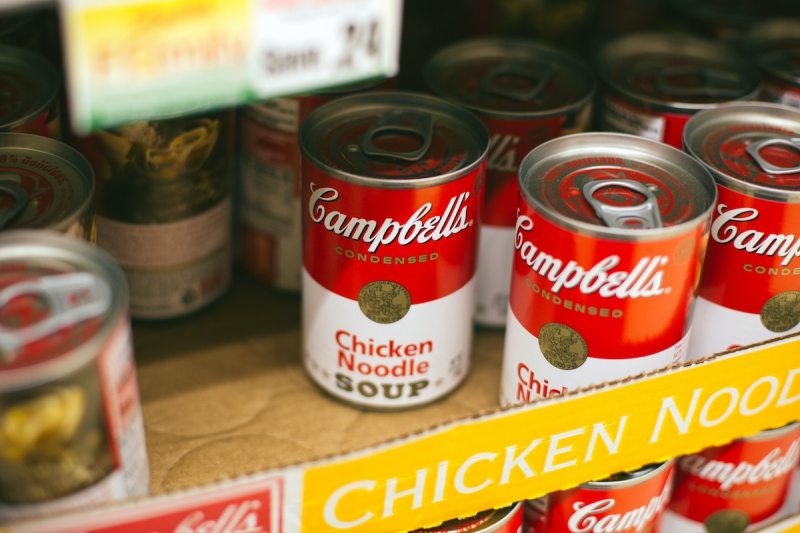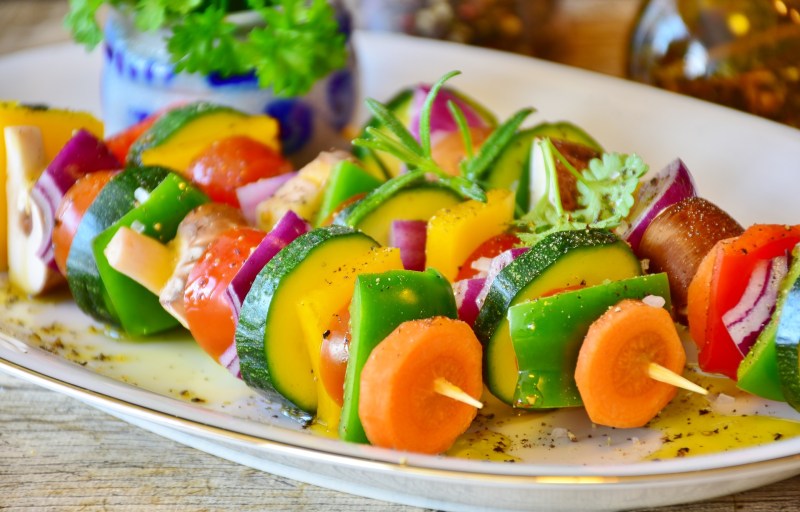Are you concerned about your sodium intake? Sodium is often considered a “bad word,” but how does it actually affect the body? As a nutritionist, I always work with clients who are worried about factors like their sodium intake and are looking to make a positive change.
While sodium does play impactful roles in the body, there is such a thing as too much. So, keep reading to learn about 15 foods high in sodium that you may want to only consume in moderation.
What is sodium?

Sodium is a mineral and an essential electrolyte that helps with many functions in the body. Found naturally in numerous foods, it’s most commonly consumed as sodium chloride or table salt. While sodium does play a critical role in the body, excessive sodium intake can lead to health issues like high blood pressure, heart disease, and kidney problems.
When you hear about sodium, it is often in a negative light because while the body needs sodium to function properly, most people consume more than the recommended daily amount. Limiting processed foods and choosing fresh, whole ingredients can help maintain a healthy sodium balance.
Is sodium good or bad for you?

Sodium can be both good and bad for you, depending on how much you consume. It’s essential for regulating fluid levels, maintaining nerve function, and supporting muscle contractions. Without enough sodium, the body can experience dehydration, low blood pressure, or muscle cramps.
However, despite the benefits, excessive sodium intake is harmful. It can cause water retention, leading to bloating, swelling, and increased blood pressure levels. In fact, a 2021 study stated that: “strong evidence suggests a direct causal relationship between sodium intake and blood pressure (BP), and a modest reduction in salt consumption is associated with a meaningful reduction in BP in hypertensive as well as normotensive individuals.”
All of this puts strain on the heart and arteries. Over time, high sodium levels may also contribute to cardiovascular disease, stroke, and kidney damage.
How much sodium do men need daily?

Men, like most adults, should aim for no more than 2,300 milligrams of sodium daily, as recommended by the Dietary Guidelines for Americans. However, the American Heart Association suggests that, ideally, men will limit themselves to 1,500 milligrams per day for optimal heart health, particularly those with high blood pressure or other risk factors.
Sodium needs can vary based on activity levels, so if you are an athlete or live in a hot climate, you may lose more sodium through sweat than others. As I mentioned before, consuming too much sodium increases the risk of many unfavorable conditions, so it’s important to focus on fresh, unprocessed foods to manage intake.
15 foods high in sodium

- Canned soup: Many canned soups are high in sodium to enhance flavor and preserve freshness. A single serving can contain over 700 milligrams of sodium.
- Processed meats: Bacon, sausage, and deli meats are preserved with salt, making them high in sodium. Regular consumption can lead to excessive sodium intake.
- Soy sauce: A tablespoon of soy sauce contains more than 900 milligrams of sodium, making it a highly concentrated source.
- Pickles: Pickles are soaked in brine, which adds significant sodium content to the cucumbers during the pickling process.
- Canned vegetables: Many canned vegetables are packed in salty brine or contain added salt for flavor and preservation, leading to high sodium content.
- Cheese: Processed cheese varieties, such as feta, Parmesan, and American cheese, are often high in sodium. Just one slice can contain a considerable amount.
- Salted snacks: Chips, pretzels, and other salted snacks have large amounts of added salt for flavor, contributing to high sodium levels.
- Frozen dinners: Many frozen meals, especially ready-to-eat options, are loaded with sodium to enhance flavor and extend shelf life.
- Condiments: Sauces like ketchup, barbecue sauce, and salad dressings often contain added salt, raising the sodium content of your meal.
- Instant noodles: The seasoning packets that come with instant noodles can contain up to 1,500 milligrams of sodium per serving.
- Pizza: Pizza contains sodium from various sources, including cheese, sauces, and processed meats, making it a high-sodium food.
- Fast-food burgers: Fast-food burgers are made with high-sodium ingredients such as buns, condiments, and processed meat patties.
- Cured fish: Fish like smoked salmon and salted cod are cured with salt, making them rich in sodium.
- Gravies and sauces: Store-bought gravies and sauces often contain excessive sodium to enhance flavor and preserve shelf life.
- Processed bread: Certain types of bread, particularly bagels, contain added salt for flavor and preservation, contributing to sodium intake.
Tips for maintaining healthy sodium levels

To maintain healthy sodium levels, consider implementing the following habits into your routine:
- Focus on whole, unprocessed foods like fruits, vegetables, lean proteins, and whole grains, which are naturally low in sodium.
- Limit processed foods, including everything I mentioned in the list above.
- Read food labels carefully, choosing low-sodium or no-salt-added options.
- Season meals with herbs, spices, lemon juice, or vinegar instead of salt to enhance flavor.
- Stay hydrated, as adequate water intake helps regulate sodium balance.
- Be mindful of portion sizes when consuming higher-sodium foods.
- Limit yourself to 2,300 milligrams of sodium per day.
Frequently asked questions

What drink is high in sodium?
Tomato juice and vegetable-based juices are high in sodium, but there are often low-sodium alternatives of these beverages. Sports drinks can also be high in sodium, as they’re designed to replenish electrolytes lost during exercise. Check labels to monitor sodium content and choose lower-sodium options if needed for your diet.
Are eggs high in sodium?
Eggs are naturally low in sodium, and one large egg contains about 70 milligrams on average. This makes them a great choice for low-sodium diets. However, the sodium content can increase if eggs are paired with salty ingredients like cheese, processed meats, or certain seasonings, so take preparation methods into consideration.
What foods keep sodium levels up?
Foods that keep sodium levels up include processed and packaged items like canned soups, frozen meals, chips, and salted snacks. Deli meats, bacon, sausages, and other cured meats are high in sodium, as are pickled foods, soy sauce, and cheese. Eating these regularly can significantly raise sodium intake, so consume them in moderation.




